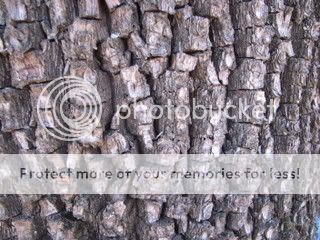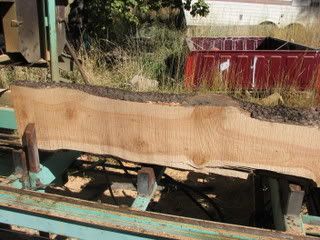Sounds good to me, but I doubt the shipping costs would be worth it between our locations.
Today I built a makeshift Logosol-type mill on my tablesaw to mill the logs I brought back yesterday. It isn't the prettiest setup and it isn't very easy to adjust but it got the job done for the few little logs I wanted to do.
My tablesaw isn't anything fancy, just an old Rockwell I got for $50 at a yard sale. I only really bought it for the working 1hp motor. It has a 4' homemade extension with a plywood top, which usually doubles as my saw workbench as well. The fence guide rail is a 6' long 2" squaretube, so I cut some 1' long Birch pieces to fit snugly into the ends of the squaretube. I built a guide board assembly from a 3.5" X 1-3/4" Douglas Fir board, with 15-1/2" X 1-3/4" square pieces of Birch on the ends for depth posts. These were clamped to the wood posts at the ends of the table saw at whatever depth necessary. The Fir board is plenty rigid enough to support my homemade Mini-Mill jig with a small saw. And yes, that
is my Homelite XL-2 bravely stepping up for some milling duties. 26cc but it chewed right through the 5" - 8" pieces. It was handy because since it was a top-handle, I could push the saw and mill with one hand and steady the log with the other if necessary. And it's so small that with the door wide open and a box fan blowing out the door, fumes and smoke weren't an issue either.
Backside view of the log and jig. To secure the log, I cut some random 2X2 scraps I had lying around at 45° and these were pushed up to the side of the log to cradle it. Since the top of the table is just some old greasy plywood, I didn't mind running screws through it to secure these pieces.
First cut is off. This is the smallest of the logs. I didn't get this one secured well enough and it rolled a bit as the chain pulled on it. The cut was off-square end to end by at least 15°. To mitigate this for future cuts, I took a third 2X2 with a 45° end and put it up against the log with the sharp part of the angle at the top, to dig into the log and keep it from turning. This secured it REALLY well.
To avoid any more waste than absolutely necessary, I wanted to split these further on the tablesaw rather than using the CSM. Not to mention it was a lot faster that way too. I only needed to square three sides as the fourth could be ripped off with the tablesaw. The near end of this log ended up nice and square, but you can see the first twisted cut at the far end.
The very bottom piece of the tree was about 18" long, 7" round at one end and about 7" X 12" at the other but very irregular. It also had some heavy center rot in the part above the guide board in this photo, so i wanted to cull that off and get the log back to more of a consistent size. I just raised one end of the guide and re-clamped it. Worked great.












